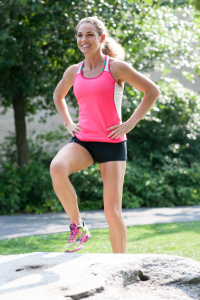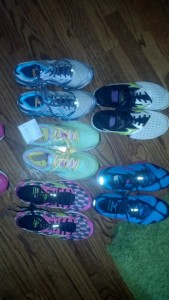 Marathon season is in full swing. Whether you are preparing for your first marathon, your one-hundredth marathon, or a goal personal best, there are a few things you should start to practice and plan NOW so that race day goes smoothly!
Marathon season is in full swing. Whether you are preparing for your first marathon, your one-hundredth marathon, or a goal personal best, there are a few things you should start to practice and plan NOW so that race day goes smoothly!
- Finalize accommodations. Race weekend can become stressful. You will naturally be a bit anxious or excited. Having your plans for the weekend – including where you are going to eat, stay and how you will get to/from the race ironed out now will equal minimal chance for added stress on race weekend.
- Practice in what you’ll wear. Everything from your shoes to your hat – wear your “race outfit” for a few long runs. This will minimize the risk of blisters, chafing, overheating, or simply annoying or uncomfortable race-day issues. If you plan to buy new shoes for your marathon, buy them and break them in on a few long runs in the weeks leading up to the big day.
- Practice how you will fuel on race day. Everything from what you’ll eat the night before and morning of to how often you will refuel with water or GU on the course. Leaving nutrition to chance is a good way to guarantee you’ll take a tour of the porta-potties mid-race.
- Start looking at your race course and elevation. Make note of landmarks, turns, water stations, and other useful points on the course. You don’t want to feel “lost” on race day. Know the course, and you’ll be prepared for success.
- Set a few race-day goals. It’s impossible to predict what will happen with 26.2 miles of running, and setting one ambitious best-case scenario goal may set you up for a whole lot of heart ache. A few goals means you may have fall-back goals you can still achieve if the star’s don’t align.
- Look at your training paces and come to terms with your strengths and weaknesses. Runners who know themselves often have a better chance of handling the tough moments and getting back on track. Revisiting your training should also give you some confidence. The proof is in the numbers, and so try not to doubt your training while you taper.
- If you are going to have friends/family cheering on the race course, discuss ahead of time exactly where they will be. It takes a lot of energy to search a crowded block while trying to stick to your paces. Knowing they will be on the northwest corner of Chestnut Street, wearing blue and holding a sign is a million times easier than looking for someone “at the intersection of Chestnut Street.”
- Make clear and definitive plans for what to do and how to get home, to the hotel, or to find family post-race. Be realistic and give yourself extra time. Marathoners move notoriously slow post-race.
No matter how your race weekend goes, try to have some fun and relax. There is always something positive to take away and learn from every race. If things don’t go your way, at least you know you were prepared. That should narrow the possibilities for making the same mistake twice – and hopefully you’ll have a kick ass race and will cross the finish line with a smile from ear to ear, feeling awesome.




